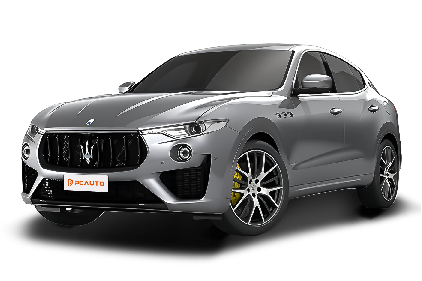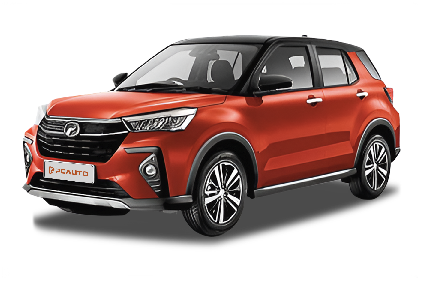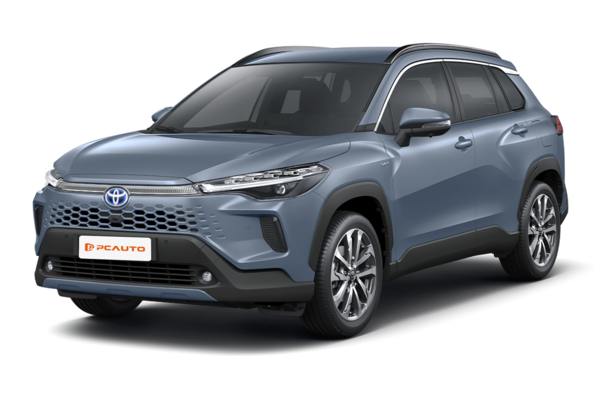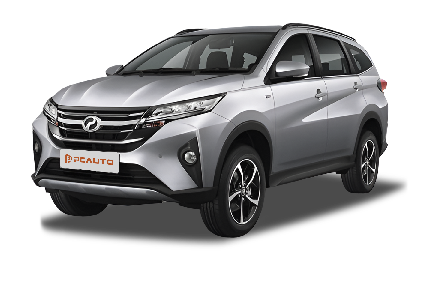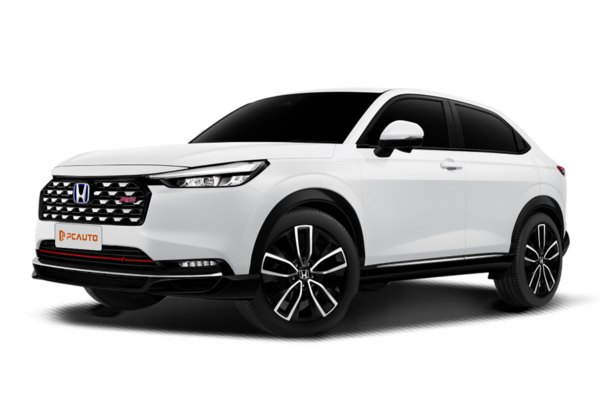Q
How much is a 2025 Maserati convertible?
Maserati hasn't officially released the exact pricing for its 2025 convertible models yet. But looking at how the 2024 GranCabrio is positioned in Malaysia – roughly between RM1 million to RM1.5 million depending on specs and options – we're expecting the 2025MY to land in a similar ballpark. Of course, slight tweaks could happen thanks to currency fluctuations, import duties, or new kit being thrown into the mix.
What makes a Maserati drop-top tick for Malaysian buyers? That unbeatable Italian design flair, for starters. Then there's the performance punch – think 3.0L V6 twin-turbo or the all-electric Folgore variant. And let's not forget that lush interior. It's a solid pick if you're after driving thrills wrapped in serious style.
Heads up though, Malaysia's import taxes and registration fees can sting. Definitely swing by an authorized dealer to lock in the latest quote, and make sure you're clued up on local after-sales support and warranty coverage. If your budget's a bit tighter, there are solid German or Japanese alternatives in the convertible space. But let's be real – Maserati's got that unique brand cachet and that exhaust note. Hard to beat that combo.
Q
Is the 2019 Maserati Ghibli reliable?
The 2019 Maserati Ghibli shows average performance in terms of reliability. The 3.0-liter V6 turbocharged engine it's equipped with has strong performance. However, some owners reported that there might be minor issues with the electronic system and suspension components. It is recommended that owners in Malaysia conduct regular maintenance and choose original parts to ensure the vehicle's stability. The hot and humid climate in Malaysia may pose additional challenges to the electronic systems of European cars, so more attention should be paid to circuit inspections and moisture protection. The advantages of this car lie in its excellent driving experience and luxurious interior, but the maintenance cost is relatively high. It is recommended that potential buyers consider officially certified used cars to enjoy extended warranty services. For consumers who pursue Italian luxury sedans, the Ghibli is still a good choice. However, they need to be prepared for a higher maintenance budget than that of Japanese cars. At the same time, it is recommended to purchase through formal channels to ensure complete after-sales service.
Q
How much does a 2019 Maserati Ghibli cost?
The price of the 2019 Maserati Ghibli in the used - car market in Malaysia was approximately between RM250,000 and RM400,000. The specific price depends on factors such as the vehicle's condition, mileage, configuration, and whether it's still under warranty. The high - end SQ4 or Trofeo versions will be more expensive.
This car is equipped with a 3.0 - liter V6 turbocharged engine, offering rear - wheel drive or all - wheel drive options. The power output ranges from 350 to 430 horsepower, paired with an 8 - speed automatic transmission. It has excellent performance, while retaining Maserati's iconic engine sound and luxurious interior.
In the Malaysian market, the Ghibli's competitors include luxury sedans like the BMW 5 Series and the Mercedes - Benz E - Class. However, the Ghibli stands out with its Italian design style and sporty genes.
When purchasing, it is recommended to check the vehicle's maintenance records and give priority to used cars certified by Maserati officially to ensure quality and after - sales service. Additionally, since it is an imported car, you also need to pay attention to the impact of customs duties and insurance costs on the total cost.
Q
Does the 2019 Maserati Ghibli have a Ferrari engine?
In 2019, the Maserati Ghibli didn't directly use a Ferrari engine. However, the 3.0-liter V6 twin-turbocharged engine it was equipped with did have a technical connection with Ferrari. This engine was jointly developed by Maserati and Ferrari and produced at the Maranello factory. Some of its technologies borrowed from Ferrari's engine design concepts, such as direct fuel injection and the turbocharging system. But the overall tuning was more in line with Maserati's luxury GT style.
For consumers in Malaysia, the Ghibli's power performance is quite excellent. Its maximum power can reach 350 to 430 horsepower. Paired with an 8-speed ZF gearbox, it can balance daily driving and sporty performance. Meanwhile, in Malaysia's hot climate, it is recommended to regularly check the cooling system to ensure the stability of the turbocharged engine.
It's worth noting that although Maserati relied on Ferrari for engine technology for a long time, the brand has gradually shifted towards in - house research and development. For example, the new Neptune series of engines adopt a completely different design concept, which reflects Maserati's continuous evolution in the field of power technology.
Q
Does a Maserati Ghibli 2019 have a timing belt or chain?
The 2019 Maserati Ghibli is equipped with a timing chain instead of a timing belt. This design is quite common among luxury brands. The reason is that compared with belts, chains have a longer service life and higher reliability. Usually, they don't need to be replaced regularly, and only the lubrication condition needs to be checked periodically. This is especially important for Malaysia's hot and humid climate, as high temperatures and humidity can accelerate the aging of rubber belts. Another characteristic of the timing chain is that it produces relatively more noise, but Maserati has effectively controlled this issue through precise engineering design and sound - insulating materials.
For Malaysian car owners, understanding this detail can help them maintain their vehicles better. Since the timing system is a core component of the engine, any problems with it may lead to serious damage. Although the maintenance cost of the chain is relatively low, it is recommended to have professional inspections regularly to ensure the long - term stable operation of the engine, especially in the urban driving environment in Malaysia where there are frequent stops and starts.
Q
Is the Maserati Ghibli 2019 a sport car?
The 2019 Maserati Ghibli is indeed a four - door sedan that combines sporty performance and luxurious design. Strictly speaking, it doesn't belong to the category of pure sports cars, but its sporty tuning and powerful engine endow it with the characteristics of a sport sedan.
This car is equipped with a 3.0 - liter V6 twin - turbocharged engine, offering two power outputs of 330 hp and 430 hp. It is paired with an 8 - speed automatic transmission and rear - wheel drive (or all - wheel drive is optional). The 0 - 100 km/h acceleration takes only 5.5 seconds (4.7 seconds for the high - power version), and the sound tuning also continues Maserati's iconic passionate style.
In the Malaysian market, the Ghibli is positioned between luxury business and performance driving. Its aluminum alloy body, 50:50 weight distribution, and Skyhook electronic suspension system enhance its handling performance. However, the longer wheelbase and comfort - oriented interior design also maintain its daily practicality.
It's worth noting that sporty models (such as the Trofeo version) usually come with more aggressive aerodynamic kits and exclusive tuning, while the standard version tends to have a more balanced setup. If you're looking for a more extreme sports car experience, you can refer to Maserati's two - door model, the GranTurismo. But the Ghibli's adaptability in Malaysia's hot climate (such as the performance of the cooling system) and the price advantage of the locally assembled (CKD) version make it a popular choice that combines performance and practicality.
Q
What is the specs of the 2019 Maserati Ghibli?
The 2019 Maserati Ghibli is an Italian four - door sedan that combines performance and luxury. In the Malaysian market, it offers two powertrain configurations, including a 3.0 - liter V6 twin - turbocharged gasoline engine. The standard version outputs 350 horsepower and 500 Nm of torque, while the high - performance Ghibli S Q4 version boosts it to 430 horsepower and 580 Nm. It's paired with an 8 - speed ZF automatic transmission. It can accelerate from 0 - 100 km/h in just 4.7 seconds and reach a top speed of 286 km/h.
The body dimensions are 4971mm×1945mm×1461mm, with a wheelbase of 2998mm. It uses a rear - wheel - drive or all - wheel - drive (Q4 version) layout and comes standard with 19 - inch wheels. The interior features high - end leather and solid wood trim panels, and is equipped with an 8.4 - inch touchscreen, a Harman Kardon sound system, and a driving mode selection system.
Notably, the exhaust sound of the Ghibli is specially tuned to maintain Maserati's iconic acoustic characteristics. The suspension system uses a double - wishbone front suspension and a multi - link rear suspension, balancing handling and comfort.
For Malaysian consumers, this car is suitable for those who pursue the experience of European luxury sports sedans. Its after - sales network covers major cities, and the locally assembled version (CKD) offers a more competitive price. Meanwhile, it's recommended to conduct regular maintenance to keep its high - performance engine in optimal condition.
Q
What is the safety rating of the 2019 Maserati Ghibli?
The specific safety rating data of the 2019 Maserati Ghibli in the Euro NCAP tests were not released. However, this model is equipped with a number of active and passive safety technologies, including adaptive cruise control, lane-keeping assist, blind-spot monitoring, and front and rear parking sensors. These features can effectively enhance driving safety in the Malaysian driving environment.
As a luxury sedan, the Ghibli's body structure is made of high-strength steel and comes standard with a multi-airbag system, which further enhances its collision protection capabilities. For Malaysian consumers, when choosing such high-end models, in addition to paying attention to safety ratings, they also need to be aware of the impact of local road conditions and climate on vehicle performance. For example, it is particularly important to regularly check the tires and braking systems in a hot and rainy environment.
In addition, it is recommended to refer to the evaluations of ASEAN NCAP or local authoritative institutions before purchasing a car, as the testing standards may vary in different regions. The performance of the Ghibli in other markets can also serve as a reference.
